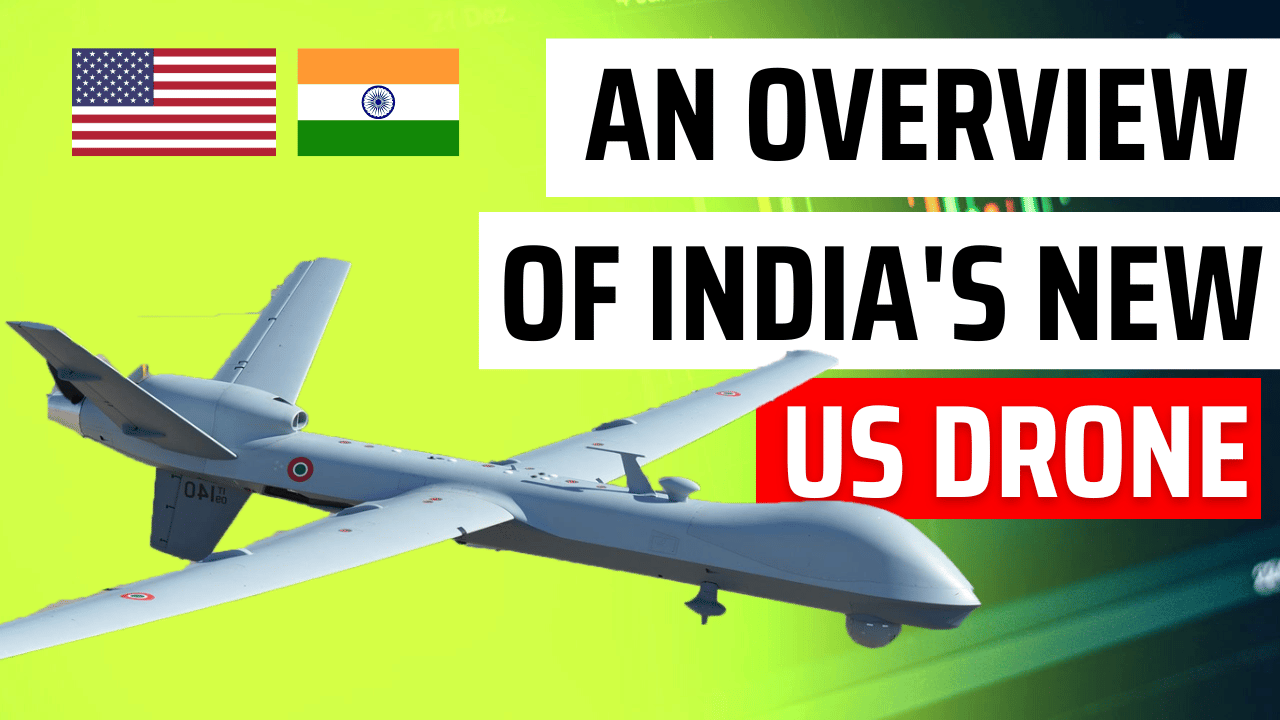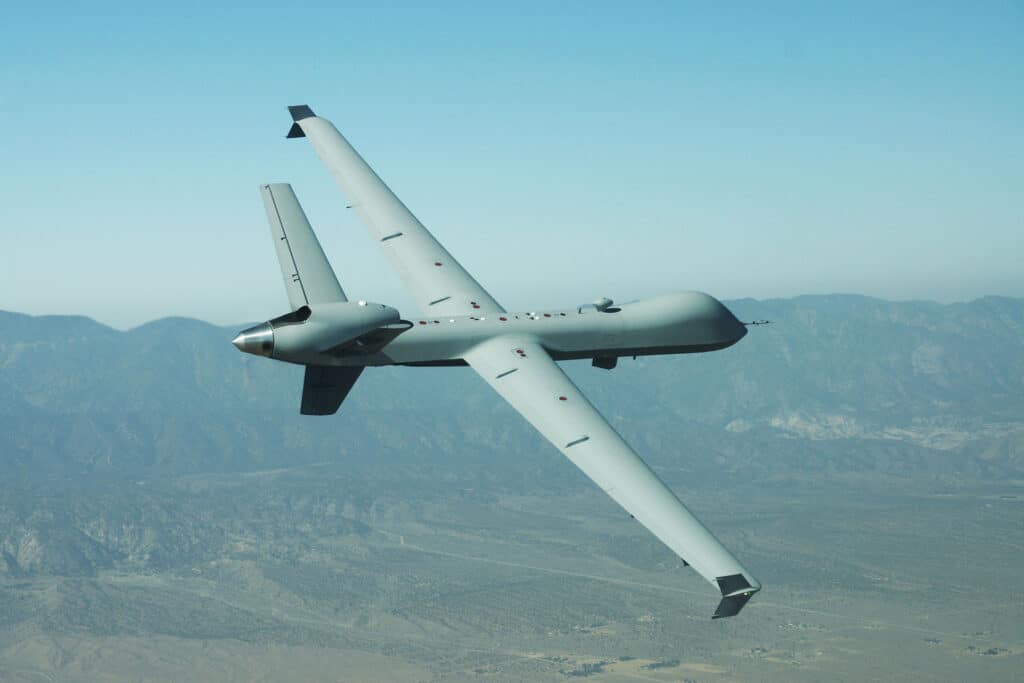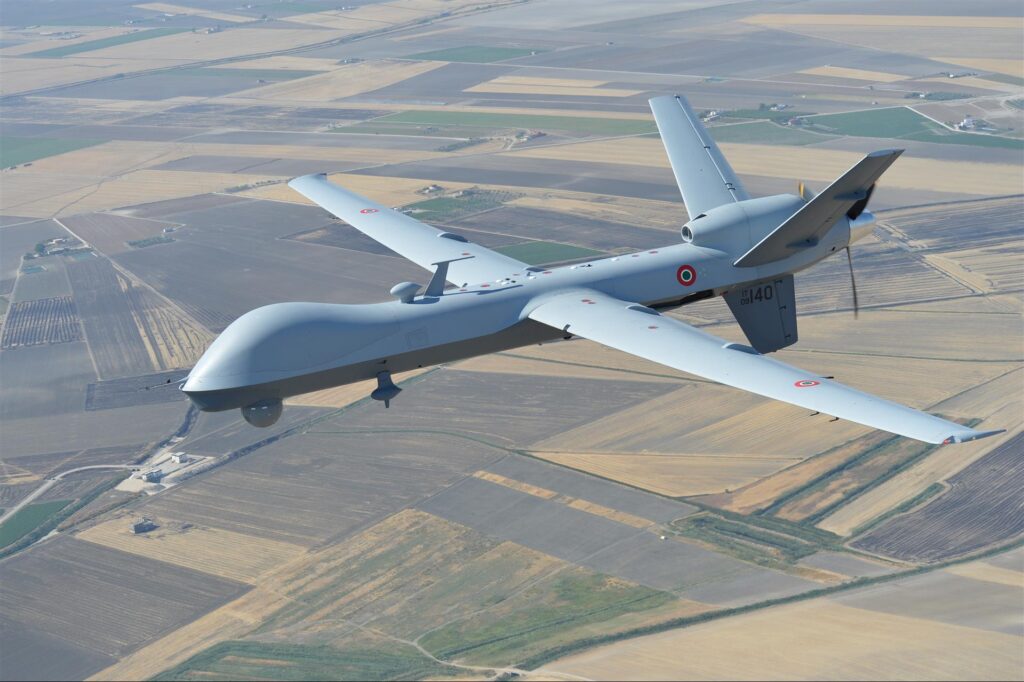Aerospace
India’s $3 Billion MQ-9 Reaper Drones Deal With US In Advanced Stage
India is reportedly buying 30 MQ-9B Predator armed drones that were produced in the US.

The UAV aircraft, which is one of the best strategic game changers, is the war’s next frontier. Currently, India is reportedly buying 30 MQ-9B Predator armed drones that were produced in the US.
There are six various variants of the aircraft depending on their operational capabilities, however, only a small number of UAVs created in the USA are offered for export to other nations. The MQ-9B is one of those UAVs.
This aircraft assists in locating the enemy’s coordinates and keeps an eye on the activity from a height of 50,000 feet. Making a choice and choosing a target for the weapons is one of the crucial elements.
The use of unmanned aerial vehicles (UAVs) in recent wars in Russia and Ukraine was crucial for remotely striking enemy targets. Since these aircraft are unmanned, they can go and hit their targets at extremely high altitudes.
Beyond any reasonable expectations, American technology can undoubtedly aid India against its nearby adversaries.
The anticipated $3 billion (about Rs 22,000 crore) purchase of 30 drones is intended to increase India’s total surveillance capabilities along the Line of Actual Control (LAC) with China and in the Indian Ocean.
Notably, the MQ-9B drone is a variation of the MQ-9 “Reaper,” which is said to have fired a modified Hellfire missile last month that took out al-Qaida commander Ayman al-Zawahiri in the center of Kabul.
Boeing received the most orders at the Farnborough airshows in 2022.(Opens in a new browser tab)
It has a turboprop engine that can run on several missions, and it can also be flown independently and remotely. This technology debuted in 2001.
10 things about Boeing 737 max aircraft.(Opens in a new browser tab)
The MQ-9 is available in two versions, one designed for surveillance and the other with seven external hardpoints for weapon storage and firing.
The U.S. and Royal Air Force gave it the moniker “Reaper,” although it is now often used to refer to any Predator B that is armed.
Top 6 Largest Passenger Aircraft in the World.(Opens in a new browser tab)
It has triple redundant flight control, which means that critical systems have been duplicated for usage in case of failure. One of the best strategies for lowering the likelihood of a significant issue affecting is redundancy. and have a more effective flight control system.
It is capable of working with both the Ku band satellite communication network and the C band line of sight data connection control. Its operational availability is 90%. It can also be self-deployed or transported by a cargo plane like a C130 transporter.
Featuring unmatched operational flexibility, MQ-9A has an endurance of over 27 hours, speeds of 240 KTAS, can operate up to 50,000 feet, and has a 3,850 pound (1746 kilogram) payload capacity that includes 3,000 pounds (1361 kilograms) of external stores. The aircraft carries 500% more payload and has nine times the horsepower. It provides a long-endurance, persistent surveillance/strike capability for the warfighter.
An extremely reliable aircraft, MQ-9A is equipped with a fault-tolerant flight control system and triple redundant avionics system architecture. It is engineered to meet and exceed manned aircraft reliability standards.
MQ-9A continues to improve and evolve, making it more relevant for its customers’ emerging needs. The MQ-9A Extended Range (ER) was designed with field-retrofittable capabilities such as wing-borne fuel pods and a new reinforced landing gear that extends the aircraft’s already impressive endurance from 27 hours to 34 hours, while further increasing its operational flexibility. To date, the MQ-9A has been acquired by the U.S. Air Force, the U.S. Department of Homeland Security, NASA, the Royal Air Force, the Italian Air Force, the French Air Force, and the Spanish Air Force.
- CharacteristicsWing Span:66 ft (20m)
- Length:36 ft (11m)
- Powerplant: Honeywell TPE331-10
- Max Gross Takeoff Weight:10,500 lb (4763 kg)
- Fuel Capacity:3,900 lb (1769 kg)
- Payload Capacity:850 lb int. (386 kg)3,000 lb ext. (1361 kg)
- Payloads: MTS-B EO/IR, Lynx Multi-mode Radar, Multi-mode maritime radar, Automated Identification System (AIS), SIGINT/ESM system, Communications relay
- Power:11.0 kW/45.0 kVA (Block 5)
(redundant) Performance - Max Altitude:50,000 ft (15240m)
- Max Endurance:27 hr
- Max Air Speed:240 KTAS
| Features |
|---|
|

Aerospace
India is set to build a central command for the Air Traffic Control system, called ISHAN

India’s air traffic growth has led to increased responsibilities for air traffic control. The Airports Authority of India (AAI) is considering centralizing air traffic control for aircraft, dividing the country into four regions. The goal is to consolidate India’s segmented airspace into a single entity to improve air traffic management (ATM) efficiency, safety, and smoothness.
Recently, the AAI invited expressions of interest to develop a detailed project report for the Indian Single Sky Harmonized Air Traffic Management (ISHAN) initiative in Nagpur. Under this plan, air traffic controllers in Nagpur would handle domestic flights flying above 25,000 feet, eliminating the need for coordination among controllers in different regions.
For domestic regional flights operating above 25,000 feet, control would shift to the central command in Nagpur. This consolidation aims to enhance airline operations, increase flight handling capacity, and reduce congestion and flight times for passengers.
Currently, the AAI provides ATM services over Indian airspace and adjoining oceanic areas, covering over 2.8 million square nautical miles. This airspace is divided into four flight information regions (FIRs) in Delhi, Mumbai, Kolkata, and Chennai, along with a sub-FIR in Guwahati.
FIRs are responsible for providing air traffic services, including weather information, visibility, and search and rescue assistance. The proposed unification under the ISHAN initiative aligns with the projected growth of the aviation industry, which anticipates a doubling of domestic passenger traffic by 2030.
Aerospace
Does AirAsia show interest in Comac aircraft in the future?

Tony Fernandes, CEO of Capital A, operating as AirAsia Group, recently paid a visit to the facilities of COMAC on April 2, 2024, and was thoroughly impressed by what he witnessed.
C919 already securing nearly 1000 orders
COMAC, known for its homegrown aircraft, has launched two promising jets: the ARJ21 and the C919 aircraft. Both aircraft are gaining popularity in the Chinese market, with the C919 already securing nearly 1000 orders from various airlines.
Fernandes expressed his admiration for COMAC’s achievements in aircraft manufacturing, acknowledging the immense challenge it entails. His visit underscored the realization that AirAsia now has a viable third option when it comes to selecting aircraft for its fleet.
During his tour, Fernandes was delighted by the innovation and technology evident in COMAC’s aircraft production and the company’s commitment to long-term partnerships.
He noted that many Western companies have shifted away from prioritizing loyalty and customer service, opting instead for short-term gains and a narrow definition of success.
Last month, COMAC embarked on an international tour, showcasing demonstration flights to neighboring countries, particularly Indonesia and Malaysia. Fernandes believes that the positive impression left by COMAC during his visit opens up new opportunities for collaboration.
Fernandes emphasized COMAC’s remarkable achievements
The shared values of loyalty, customer service, and long-term vision align closely with AirAsia’s ethos, making collaboration with COMAC appealing. With a focus on innovation and excellence, both companies stand to benefit from a partnership grounded in trust and a shared commitment to success.
Indonesia and China have already collaborated in validating and maintaining the airworthiness of the ARJ21 aircraft, indicating a solid foundation for future partnerships.
In his statement, Fernandes emphasized COMAC’s remarkable achievements and genuine desire for long-term partnership, highlighting the absence of ego and a genuine willingness to succeed together. He marveled at COMAC’s fully automated, AI-driven factory, a testament to their dedication to innovation and efficiency.
Fernandes criticized Western firms for prioritizing short-term gains over loyalty, customer service, and long-term strategy, emphasizing the importance of understanding customers’ needs and collaborating to achieve success.
Aerospace
Indigo will soon launch Air Taxi Service in India

InterGlobe Enterprises, the parent brand of IndiGo, is set to revolutionize travel in India with its upcoming air taxi service.
Scheduled for a potential launch in 2026, this innovative venture promises a seamless journey for passengers between two bustling hubs. Delhi and Gurgaon in Haryana. The forthcoming service is projected to revolutionize the daily commute, offering passengers a swift aerial journey covering the distance in a mere 7 minutes.
This remarkable efficiency contrasts starkly with the conventional 90-minute drive, underscoring the immense time-saving potential for commuters. The anticipated fare, ranging from Rs 2,000-3,000, makes this innovative mode of transport not only swift but also remarkably competitive in pricing.
At the heart of this ambitious endeavor lies a strategic partnership with Archer Aviation, a pioneer in electric vertical takeoff and landing (eVTOL) aircraft technology. Under this collaboration, Archer will supply 200 state-of-the-art eVTOL aircraft, representing an investment of US$ 1 billion. These cutting-edge aircraft, capable of accommodating up to four passengers alongside the pilot, epitomize the future of sustainable air travel.
Powered by six battery packs, Archer’s eVTOL aircraft boast rapid charging capabilities, enabling a swift turnaround between flights. With a charging time of just 30-40 minutes, these eco-friendly aircraft ensure minimal downtime, maximizing operational efficiency.
Similar services are anticipated to be introduced by the joint venture in Bengaluru and Mumbai as well. Nevertheless, the service rollout period has not yet been made public by the company. Next year, it is anticipated to get its certification. Following this, the company will start the certification procedure with the Directorate General of Civil Aviation (DGCA).


























